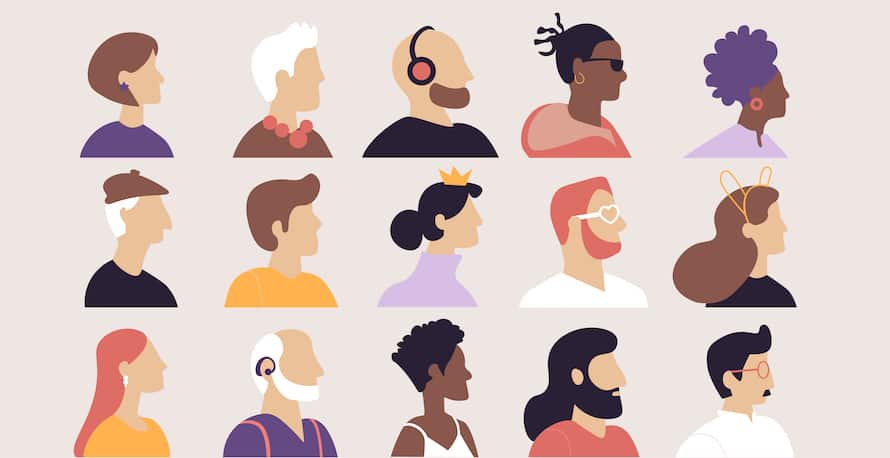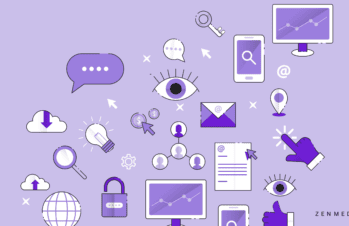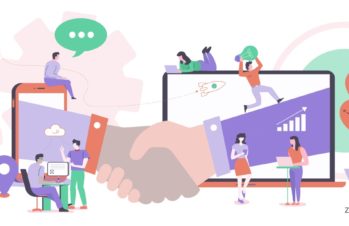Here’s a stat that every marketer needs to read (first, take a deep breath):
Only 3% of buyers say the advertising they see is relevant to them.
Ouch.
How is this possible? Aren’t we using data-driven buyer personas to develop customer-centric marketing strategies? Aren’t we looking at demographic data and click-through rates?
Be that as it may, the methods we’re using aren’t working—or at least, they’re not working well enough.
That means it’s time to reinvent the B2B buyer persona. Here’s how.
Move from third-party to zero-party data to inform your B2B buyer persona.

Building B2B buyer personas is a data-informed process.
The information we classify as “data” here can be:
- Anecdotal, from sales or customer support
- Evidence-based, as in data that’s collected via Google Analytics or a customer survey
- Third-party, as in data that someone else collected that a brand purchases or rents, and that the brand trusts as a matter of fact
Then marketers and salespeople get together and use this data to create hypothetical buyer personas with specific attributes, pain points, etc.
You might have “Purchasing Peter” from a hypothetical client’s purchasing department. Or CMO Sally, head of marketing at another hypothetical client.
And yes, these personas can still be helpful. You’ve got to start somewhere, after all.
But the problem is that, for one thing, the data you’re using to create these personas is static (unless you’re updating every day). And that can mean that your B2B buyer persona is outdated even before you put it to use.
There’s much more accurate data you could be using: zero-party data.
What is zero-party data?
Zero-party data is the highest-quality data you can obtain because it’s information you proactively request from your customer.
That could include information collected through email sign-up forms, questionnaires, surveys, registration forms, etc.
For example:
- Go interactive by creating a mobile micro-experience, with 2-4 questions about customers’ motivations, interests, or needs
- Ask for the customer’s birthday in exchange for a free gift or discount on their special day
- Create a poll on social media
- Send out a survey
- Create an email or messaging preference center where customers choose the communications they want to receive
- Offer a loyalty program where customers receive discounts, early bird pricing, or other perks in exchange for sharing specific information.
The data you gather here can clue you into everything from basic information, like how old your customers are, to highly nuanced opinions, like their thoughts on a recent industry shake-up.
This data can be aggregated to give you a clearer picture of who’s buying from you currently and help you identify additional groups that you could be targeting.
Go further and interview your current customers to identify B2B buyer personas.

If you’re interested in going further with your data-gathering, consider asking some of your current customers if they’d be willing to do a short interview with one of your marketing team members.
When it comes to deciding whom to ask, make sure you include more than just your happiest, most loyal customers! As lovely as it is to hear person after person tell you how great your brand is, that’s not going to help you much when it comes to improving your digital marketing.
Focus on including some happy customers, as well as some who are neutral or lukewarm about your brand and a few who’ve expressed dissatisfaction. For one thing, those dissatisfied customers can give you insight into where your brand could get better; but for another, taking the time to speak with them and seeking out their feedback can go a long way toward repairing your brand’s relationship with them.
In terms of questions to ask, gather info on these topics (but always feel free to add additional questions tailored to your brand, your goals, or your customers):
- Customer’s role—title, responsibilities
- Challenges the customer faces on a daily or regular basis
- KPIs or metrics that the customer is responsible for meeting
- What success looks like for that customer
- Where they look for news or education about their industry/role (publications, blogs, and other media sources)
- How they prefer to communicate with vendors (email, phone, etc.)
- Whether they use social media to research potential vendors, and which platforms
You can also ask them to describe a recent purchase that they felt went smoothly, whether it was with your brand or not.
Remember to ask “why?” when appropriate—the point here is to draw out as much detail and nuance as possible, which is much easier to do in conversation than through any other method. That’s why you’re conducting a full interview, after all, rather than simply asking them to fill out a survey.
Once you’ve gathered this zero-party data, combine it with your first-party data to inform your branding and online marketing strategies.
As important as zero-party data is, it’s never going to replace the kind of simple, number-driven data that you gather through your website and social media channels: the number of downloads, engagement with blog posts, click-through rates, and more.
That data can give you the foundation you need to understand what currently seems to be working, and what doesn’t. It’s like a baseline: it will help you figure out where to start building, and where to begin tearing down.
Zero-party data, however, is what you need to design customer-centric marketing that builds strong, lasting connections with your buyers. This is where you get the nuance of their likes and dislikes, their needs and wants, and their challenges and successes.
By incorporating both into your marketing, you’ll be able to design content, customer experiences, ads, and more that are truly relevant to your customers.
To learn more, read “What Is Relevant Content in B2B Marketing?”





